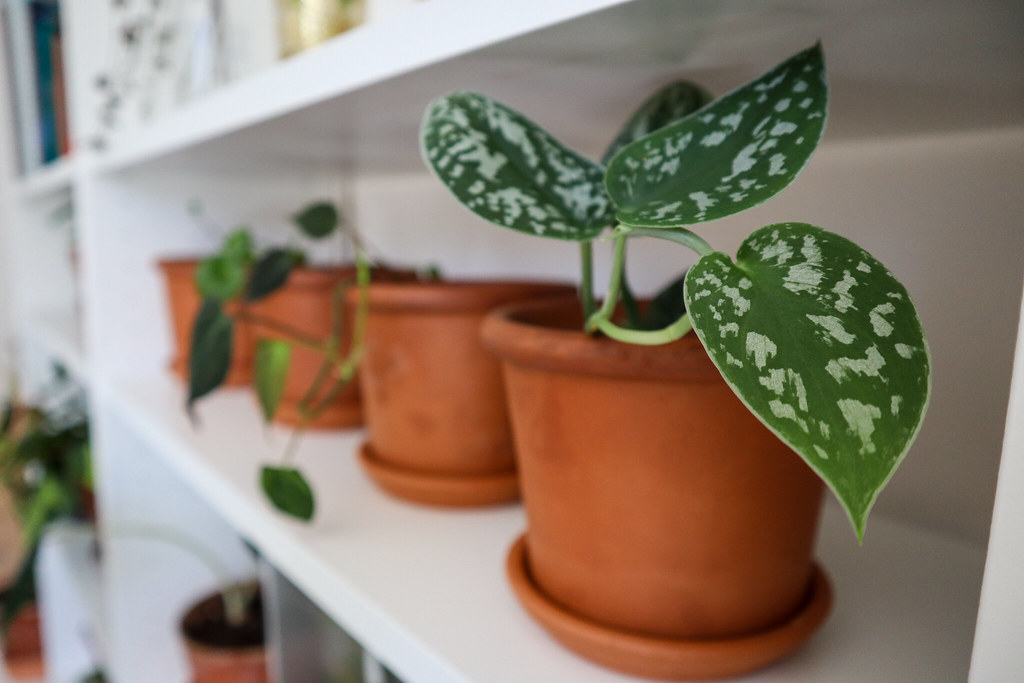Did you know that a large number of houseplants are toxic to dogs? And some of them are found in many apartments.

Here's a list of such plants:
ARUM FAMILY (ARACEAE)
The toxic sap of plants in this family contains the amino acid asparagine and calcium oxalate crystals, which can cause throat and oral mucosa swelling, burning, blisters on the mucosa, respiratory arrest, and, if it comes into contact with the eyes, conjunctivitis and irreversible corneal changes leading to blindness. It can also lead to allergic dermatitis and kidney and heart problems.
ARALIA FAMILY (ARALIACEAE)
The sap and leaves contain the toxin gedunin, various toxic glycosides, and alkaloids, which can cause irritation of the mucous membranes and the gastrointestinal tract, suppress heart muscles, and even lead to respiratory arrest.
DOG BANE FAMILY (APOCYNACEAE)
Toxins in these plants have a neuro-paralytic effect, suppress the heart and lung function, and affect visual function.
MILKWEED FAMILY (EUPHORBIACEAE)
They contain euphorbin, and poisoning with it can cause severe and long-lasting burns and ulcers in the oral cavity and throat, inflammation of the mucous membranes of the eyes (even temporary blindness), gastrointestinal dysfunction with nervous regulation disturbance, and allergic dermatitis.
PRIMROSE FAMILY (PRIMULACEAE)
This family includes cyclamens and primroses, which contain the toxin cyclamin, causing pain in the oral cavity and throat, mucosa burns, and breathing difficulties.
AMARYLLIS FAMILY (AMARYLLIDACEAE)
They contain the alkaloid lycorine, which can cause abdominal pain, vomiting, excessive salivation, diarrhea, and, in large amounts, tremors, paralysis, and collapse.
HEATH FAMILY (ERICACEAE)
They contain the glycoside andromedotoxin, which causes poisoning when ingested. The nectar of the flowers and leaf sap can lead to central nervous system depression, heart issues, digestive disturbances, nasal discharge, and excessive salivation.
NIGHTSHADE FAMILY (SOLANACEAE)
The green parts of these plants contain the alkaloids solanine, atropine, and scopolamine, which can cause vomiting, excessive salivation, confusion, hallucinations, visual disturbances, respiratory and cardiac issues, and paralysis when ingested.
Please ensure that these toxic plants are out of reach of your dogs to keep them safe and healthy. If you suspect your dog has ingested any of these plants, seek immediate veterinary attention.
The toxic sap of plants in this family contains the amino acid asparagine and calcium oxalate crystals, which can cause throat and oral mucosa swelling, burning, blisters on the mucosa, respiratory arrest, and, if it comes into contact with the eyes, conjunctivitis and irreversible corneal changes leading to blindness. It can also lead to allergic dermatitis and kidney and heart problems.
- Dieffenbachia
- Monstera
- Anthurium
- Spathiphyllum
- Caladium
- Philodendron
- Alocasia
- Aglaonema
- Zantedeschia or Arum maculatum
- Zamioculcas
- Syngonium
- Hedera (Ivy)
ARALIA FAMILY (ARALIACEAE)
The sap and leaves contain the toxin gedunin, various toxic glycosides, and alkaloids, which can cause irritation of the mucous membranes and the gastrointestinal tract, suppress heart muscles, and even lead to respiratory arrest.
- Hedera (Ivy)
- Fatsia japonica
- Polyscias
- Schefflera
- Fatshedera
- Hedera (Ivy)
DOG BANE FAMILY (APOCYNACEAE)
Toxins in these plants have a neuro-paralytic effect, suppress the heart and lung function, and affect visual function.
- Nerium oleander
- Pachypodium
- Adenium obesum (Desert Rose)
- Mandevilla or Dipladenia
- Gloriosa
- Colchicum
MILKWEED FAMILY (EUPHORBIACEAE)
They contain euphorbin, and poisoning with it can cause severe and long-lasting burns and ulcers in the oral cavity and throat, inflammation of the mucous membranes of the eyes (even temporary blindness), gastrointestinal dysfunction with nervous regulation disturbance, and allergic dermatitis.
- Euphorbia pulcherrima (Poinsettia)
- Codiaeum (Croton)
- Euphorbia Milii
- Euphorbia tirucalli (Pencil Cactus)
- Acalypha
- Ricinus communis (Castor Bean Plant)
PRIMROSE FAMILY (PRIMULACEAE)
This family includes cyclamens and primroses, which contain the toxin cyclamin, causing pain in the oral cavity and throat, mucosa burns, and breathing difficulties.
- Cyclamen
- Primula
AMARYLLIS FAMILY (AMARYLLIDACEAE)
They contain the alkaloid lycorine, which can cause abdominal pain, vomiting, excessive salivation, diarrhea, and, in large amounts, tremors, paralysis, and collapse.
- Amaryllis
- Hippeastrum
- Zephyranthes
- Eucharis
- Valotta
- Clivia
HEATH FAMILY (ERICACEAE)
They contain the glycoside andromedotoxin, which causes poisoning when ingested. The nectar of the flowers and leaf sap can lead to central nervous system depression, heart issues, digestive disturbances, nasal discharge, and excessive salivation.
- Rhododendron (Azalea)
- Hydrangea
NIGHTSHADE FAMILY (SOLANACEAE)
The green parts of these plants contain the alkaloids solanine, atropine, and scopolamine, which can cause vomiting, excessive salivation, confusion, hallucinations, visual disturbances, respiratory and cardiac issues, and paralysis when ingested.
- Solandra
- Solanum capiscastrum (Winter Cherry)
- Browallia
- Datura
- Atropa belladonna (Belladonna)
- Hyoscyamus niger (Henbane)
- Berries of Physalis, potatoes, and eggplants
Please ensure that these toxic plants are out of reach of your dogs to keep them safe and healthy. If you suspect your dog has ingested any of these plants, seek immediate veterinary attention.